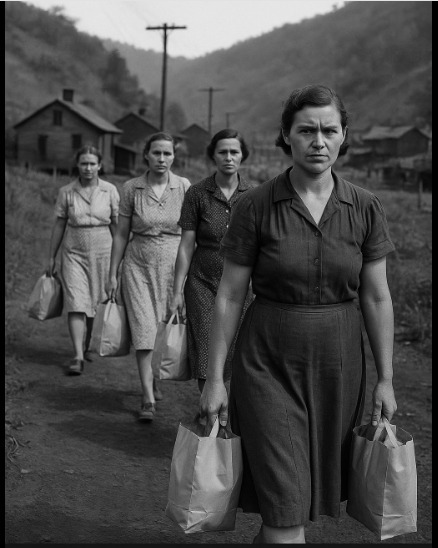In 1938, outside Mohegan, West Virginia, a line of miners’ wives made their way home, grocery bags in tow, through a land shaped by coal dust and quiet perseverance. But take a second look—this isn’t just a walk from town. Captured by Marion Post Wolcott for the Farm Security Administration, the photo offers something deeper and more revealing: a kind of buried strength, not in headlines but in every stride. What realities filled those bags, and what silent stories followed them through the shadows of the Depression?
You might be shocked at how much history lives in this one still moment. It’s not merely a photo of women walking—it’s a portrait of endurance during one of the toughest eras in U.S. history. These women weren’t just tending homes—they were anchoring entire communities while their husbands vanished into mines that devoured air and sunlight. Each dollar brought risk; each grocery haul was a quiet testament to survival. Their clothes were plain, but the pride? Undeniable.
There’s a striking omission in how we remember Appalachia today—voices like these. No headlines, no fanfare, only the steady bravery of women who turned paychecks into perseverance and unity. Wolcott didn’t simply take a picture—she revealed what most textbooks overlook: that behind each coal miner stood a woman who kept meals on tables, children safe, and hope alive. This isn’t nostalgia—it’s radical in its truth. Don’t just scroll by. This is America, unfiltered.✍️
